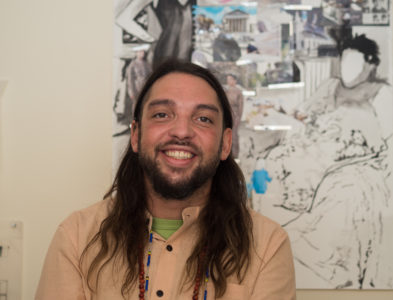
On Wednesday, Feb. 14, Grinnell’s own Professor Fredo Rivera ’06 presented the talk “Modern Architecture in Grinnell” at Drake Community Library. The lecture is part of the Grinnell Community Education Council (CEC)’s Bucket Course series, in which “Grinnell College professors, medical professionals and career scientists” teach topics worth learning about before kicking the bucket.
Rivera’s course on Grinnell architecture focused on seven buildings in Grinnell and explored how they reflect different styles of architecture around the world.
“I chose Grinnell as a way to look at modern architecture,” Rivera said. “Grinnell is a really fascinating place to think about the history of modern architecture.”
Some buildings of particular interest in the presentation include the Union Depot (now The Peppertree restaurant), the Jewel Box Bank and the Joe Rosenfield Center. The Jewel Box Bank was designed by Louis Sullivan, an architect famous for building skyscrapers in Chicago and St. Louis. Rivera connected the Jewel Box Bank specifically with Sullivan’s Wainwright Building in St. Louis.
“What I wanted to do with [the Sullivan] comparison is relate these two periods Sullivan is best known for. This period where he was influential with the skyscraper in the U.S., and elements within that building which can relate to his later work, which is sort of these small-town jewel box banks,” Rivera said. “He was no longer getting huge commissions, and he was going around the Midwest trying to make big architectural statements.”
More contemporarily, he presented on the Joe Rosenfield Center, which was designed by world-famous architect Cesar Pelli, who is most famous for designing the Petronas Towers in Kuala Lumpur, Malaysia.
Rivera also fielded questions from the audience.
“It was really interesting — a lot of [the audience] had roots in the town and at the College,” Rivera said. “A lot of questions were about architecture on the campus.”
There is also a connection between Rivera’s Grinnell architectural history bucket course and the Modern Architecture and Globalization course he taught last fall.
“In my ‘Modern Architecture and Globalization’ course, I have students write about buildings in Grinnell, and that influenced my lecture. And I included excerpts from students’ papers in the presentation,” Rivera said.
Rivera believes that the buildings from every era, both in town and on campus, make Grinnell a special place for architecture.
“Grinnell is a really fascinating place to think about the history of modern architecture because of the diversity of examples,” Rivera said. “One of the audience members made a comment of, ‘What’s your perception of thinking about Grinnell in relation to other places, and why does this campus have a reputation of being a hodge-podge?’ I made the argument that, yes, it is a bit [of a] hodge-podge. But it makes it convenient for someone teaching modern architecture because you have a diversity of styles with which to inform the survey.”























































